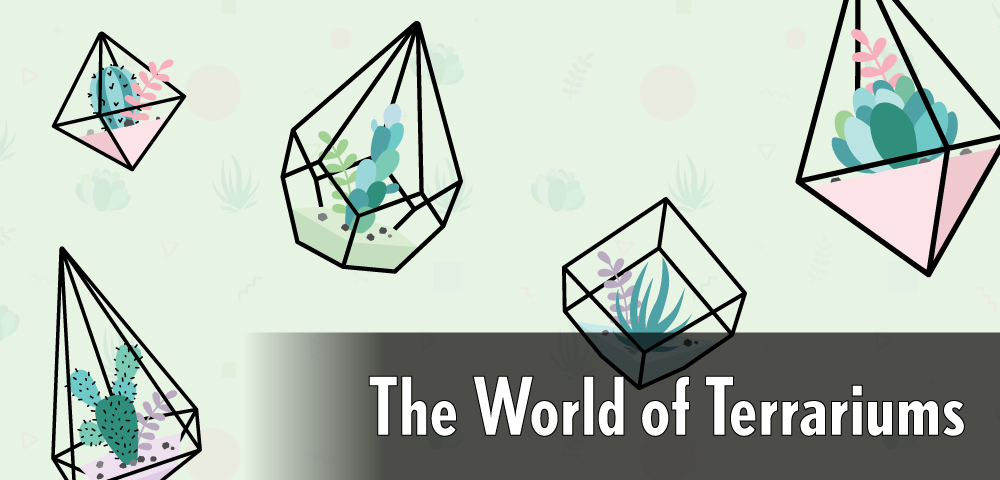
By Michelle Pepino, Library Aide, Tysons-Pimmit Regional Library
Have you ever wanted to capture a piece of nature and bring it inside to relive one of your outdoor adventures? You need a terrarium!
Terrariums are mini gardens made of a variety of plants, rocks, and other natural materials housed in a small container like a jar or fishbowl, making it easy to keep a little pocket of the outdoors inside your home. Terrariums have grown in popularity in recent years for their fun, quirky elegance. Many people enjoy them because they are easy to care for, especially for beginners. You can use air plants, moss, cacti, succulents and other decorative materials as well as stones, seashells or driftwood to create your own personalized little green world.
There is no right or wrong way to construct a terrarium and there are many different types you can create. These include:
- Open-air terrariums: Mostly for plants that require more air and sunlight.
- Closed terrariums: Transparent containers that are completely closed and have plants that thrive on humidity and moist environments.
- Hanging terrariums: May consist of closed or open containers, which can be suspended in mid-air.
Terrariums: A Brief History
Though it wasn’t until recently that their popularity blossomed, terrariums certainly are not a new concept. In fact, terrariums date back to the 1800s and were discovered by accident! Nathaniel Bagshaw Ward, a doctor, worked in a heavily polluted area on London’s East End in the late 1820s. Ward was an “unsuccessful gardener” whose every attempt to grow plants was prevented by the city smog, according to an article in JSTOR Daily. After Ward tried to hatch a sphinx moth chrysalis in a closed glass bottle, he noticed a “tiny fern and a few blades of grass emerged in the mould and continued to grow without the addition of more water to the bottle.” Thus, the terrarium was born.
Now that you know a bit more about terrariums, it is time that you try making one of your own.
Creating a Terrarium
Tools:
- Small scoop
- Funnel
- Spray bottle
- Long tweezers
Materials:
- Transparent container
- Succulent soil
- Your choice of plant(s): cacti, succulents, air plants, etc.
- Sand, gravel or lava rocks
- Decorative materials (i.e. stones, driftwood, moss, crystals, etc.)
Directions:
- Prepare your container by making sure it is clean.
- Arrange your larger items inside the container. Try placing tall or voluminous plants to create a balanced composition.
- Tamp down each of your drainage layers. Pennsylvania Horticultural Society Online states that “most terrariums containers do not have drainage holes, so it is important to create drainage layers to prevent plant roots from rotting.” Begin by using your scoop to add your drainage layers, patting down each individual layer well to ensure evenness. Gravel, sand or lava rock work well to create these layers.
- Layer your succulent soil on top of your drainage layer.
- Use a funnel to keep your terrarium neat.
- Add your decorative materials on top of the soil. Make it a point to rotate your terrarium as you are building to get a better idea of how everything looks. Use your tweezers to position your materials as you see fit.
Caring for Your Terrarium
Keep your terrarium in a well-lit area with indirect light. Spritz your terrarium with your spray bottle about once a week. Terrariums only need about a tablespoon of water weekly. If the soil is dry, then it needs to be watered. For closed terrariums that have condensation buildup, and the soil is very saturated, remove the lid and check back until it is just damp.

